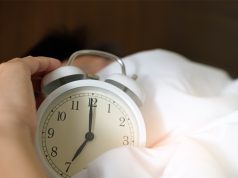Napping during the day is an ancient custom that is practiced worldwide.
While some people view napping as a luxurious indulgence, others see it as a way to maintain alertness and well-being. But napping can come with drawbacks as well as benefits.
As an orofacial pain specialist, I have extensive education in sleep medicine and how sleep impacts wellness, due mostly to the relationship between sleep and painful conditions such as headaches and facial pain. My training involved all aspects of sleep, especially sleep breathing disorders, insomnia and sleep-related movement disorders.
As such, I’m aware of the complex nature of napping, and why a short nap – that is, a nap during the daytime that lasts from 20 to 30 minutes – may be beneficial in myriad ways.
An abundance of health benefits
Research shows that there are many benefits to napping. Short naps can boost mental functioning and memory, as well as improve alertness, attention and reaction time.
Short naps are also linked to increased productivity and creativity. Because napping seems to improve creative thinking, some companies have attempted to harness this by introducing napping rooms into the workplace.
What’s more, it appears the brain uses nap time to process information gathered throughout the day, which appears to enhance problem-solving abilities. One small study revealed that people who took short naps were less frustrated and impulsive, which resulted in better focus and efficiency when performing work-related tasks. Napping may even lead to an improved ability to learn new motor skills, such as a golf swing or the playing of a musical instrument. This is because these memories or skills become consolidated in the brain during sleep, whether at night or while napping.
Napping can also reduce stress. One study found that naps of approximately 20 minutes improved the overall mood of participants. However, longer naps lasting more than 30 minutes are not typically associated with improved mood and increased feelings of well-being.
Short naps may also be associated with a reduced risk of cardiovascular diseases. If we are awake more than we should be, we tend to have a buildup of the “fight or flight” chemicals in our bodies. Studies show that more consistent sleep will help lower these chemicals, resulting in a normalization of blood pressure and heart rates. Napping appears to help this process for some people.
But just as in nighttime sleep, some people may have trouble drifting off for a nap, especially when they have limited time. Progressive muscle relaxation techniques have been shown to be beneficial for both nighttime sleep and napping. Other nonspecific relaxation techniques, like listening to relaxing music, appear to also be beneficial for falling asleep. Interestingly, many people overestimate their time awake when trying to sleep and underestimate the time they actually spend sleeping.
Napping can have drawbacks
One condition associated with napping longer than 30 minutes is sleep inertia–the grogginess and disorientation that people sometimes experience after waking from a longer nap.
Usually, the longer the nap, the more sleep inertia there is to overcome. This can impair cognitive function from several minutes up to half an hour. In many cases, these effects can be minimized by consuming caffeine directly after the nap.
But it is important to note that caffeine is not a substitute for sleep. Caffeine acts to temporarily block the action of a chemical known as adenosine, a sleep-promoting agent that builds up during waking hours. If you are habitually dependent on caffeine consumption to keep you awake and alert, it may suggest that there is an underlying sleep disorder such as insomnia or sleep apnea, in which a person temporarily stops breathing during sleep.
Long or late afternoon naps can also interfere with nighttime sleep, either by leading to difficulties falling asleep or staying asleep during the night. This disruption of the regular sleep-wake cycle can result in overall sleep deprivation, which can have numerous negative health effects.
What’s more, for those aged 60 and up, longer naps – beyond 30 minutes – may increase the risk for cardiovascular problems. Researchers found that older adults taking naps for more than one hour per day have a higher incidence of increased blood pressure, high blood sugar, excess body fat around the waist, and abnormal cholesterol or triglyceride levels, sometimes known as metabolic syndrome.
The reason for this phenomenon is mostly unknown. Older individuals tend to nap more frequently than younger adults partly due to more disturbed sleep during the night. This could be related to more pain or other health factors that will interfere with sleep, sleep-altering medications and altered sleep rhythms seen with aging.
Best practices
So, to maximize benefits while reducing risks, here are some tips: Keep naps short to avoid sleep inertia and nighttime sleep disruptions. Nap in the early afternoon, as that aligns with a decrease in energy levels after lunch and with the body’s natural circadian dip, which is an increase in sleepiness similar to what occurs at dusk. Avoid late afternoon naps, finish naps at least four to six hours before bedtime, and create the right environment by napping in a quiet, comfortable and dimly lit space.
If you’re struggling with daytime sleepiness, it’s best to address the root cause rather than relying solely on napping. Reducing caffeine consumption, maintaining a regular sleep schedule and getting adequate nighttime sleep are essential steps to reduce daytime sleepiness.
Ultimately, napping should complement a healthy sleep routine, not serve as a substitute for sufficient nighttime rest. A balanced approach to napping can contribute to a more energized, focused and resilient life.








